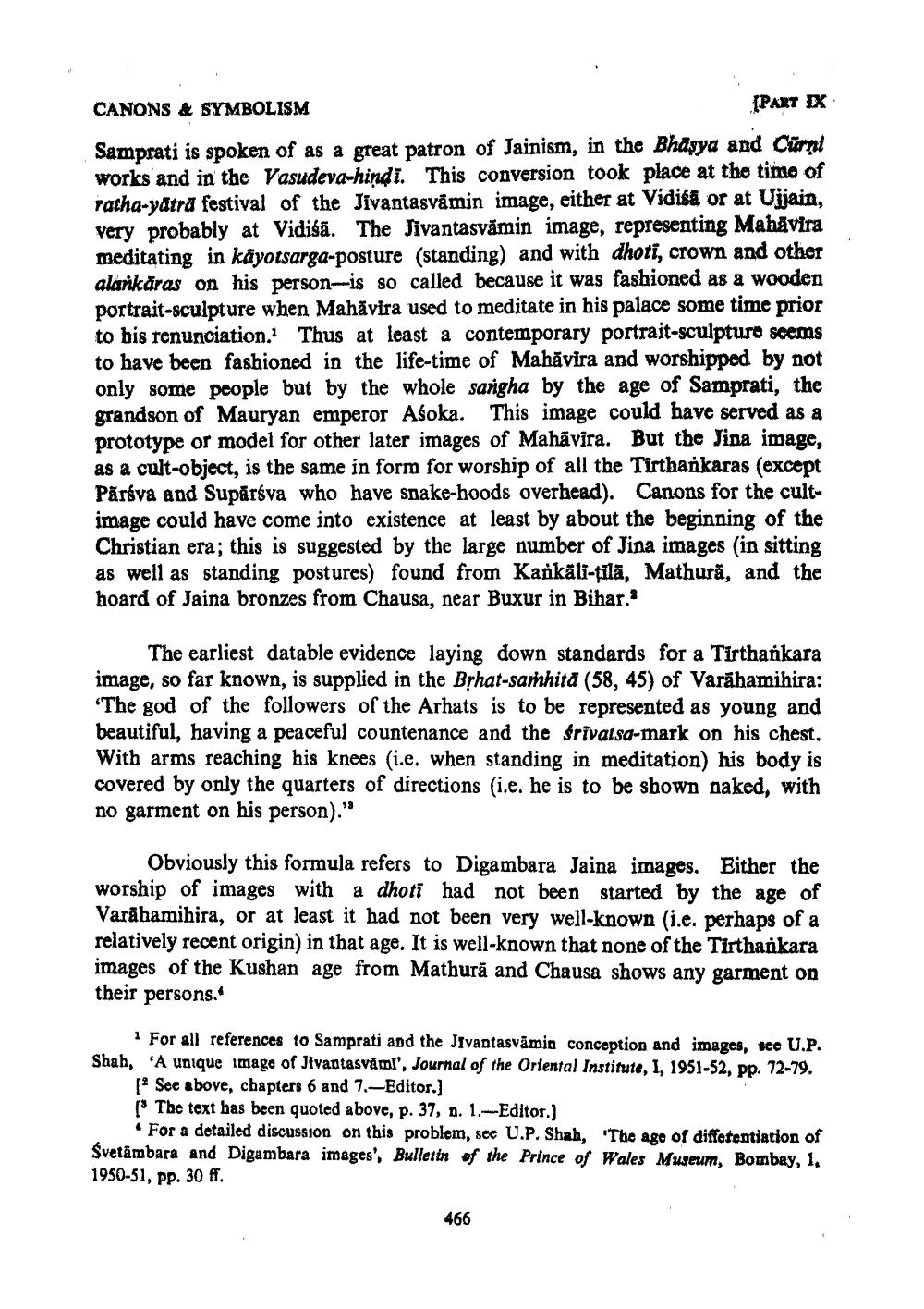________________
CANONS & SYMBOLISM
РАхт х. Samprati is spoken of as a great patron of Jainism, in the Bhasya and Cürni works and in the Vasudeva-hindi. This conversion took place at the time of ratha-yatra festival of the Jivantasvāmin image, either at Vidisa or at Ujjain, very probably at Vidiśā. The Jivantasvămin image, representing Mahavira meditating in käyotsarga-posture (standing) and with dhoti, crown and other alarkāras on his person-is so called because it was fashioned as a wooden portrait-sculpture when Mahavira used to meditate in his palace some time prior to bis renunciation. Thus at least a contemporary portrait-sculpturo scems to have been fashioned in the life-time of Mahăvira and worshipped by not only some people but by the whole sargha by the age of Samprati, the grandson of Mauryan emperor Asoka. This image could have served as a prototype or model for other later images of Mahāvira. But the Jina image, as a cult-object, is the same in form for worship of all the Tirthankaras (except Päráva and Supārsva who have snake-hoods overhead). Canons for the cultimage could have come into existence at least by about the beginning of the Christian era; this is suggested by the large number of Jina images (in sitting as well as standing postures) found from Kankäli-tilā, Mathură, and the hoard of Jaina bronzes from Chausa, near Buxur in Bihar.
The earliest datable evidence laying down standards for a Tirthankara image, so far known, is supplied in the Brhat-sarhità (58, 45) of Varahamihira: 'The god of the followers of the Arhats is to be represented as young and beautiful, having a peaceful countenance and the frivatsa-mark on his chest, With arms reaching his knees (i.e. when standing in meditation) his body is covered by only the quarters of directions (i.e. he is to be shown naked, with no garment on his person)."
Obviously this formula refers to Digambara Jaina images. Either the worship of images with a dhoti had not been started by the age of Varahamihira, or at least it had not been very well-known (i.e. perhaps of a relatively recent origin) in that age. It is well-known that none of the Tirtharkara images of the Kushan age from Mathurā and Chausa shows any garment on their persons.
i For all references to Samprati and the Jivantasvāmin conception and images, see U.P. Shah, 'A unique image of Jivastasvām!', Journal of the Oriental Institute, I, 1951-52, pp. 72-79.
[ Sec above, chapters 6 and 7.-Editor.) [The text has been quoted above, p. 37, n. 1.-Editor.)
• For a detailed discussion on this problem, sec U.P. Shah, "The age of diffetentiation of Svetāmbara and Digambara images', Bulletin of the Prince of Wales Museum, Bombay, 1, 1950-51, pp. 30 ff.
466




